1945 Wheat Penny Coin Value: How Much Is It Worth?
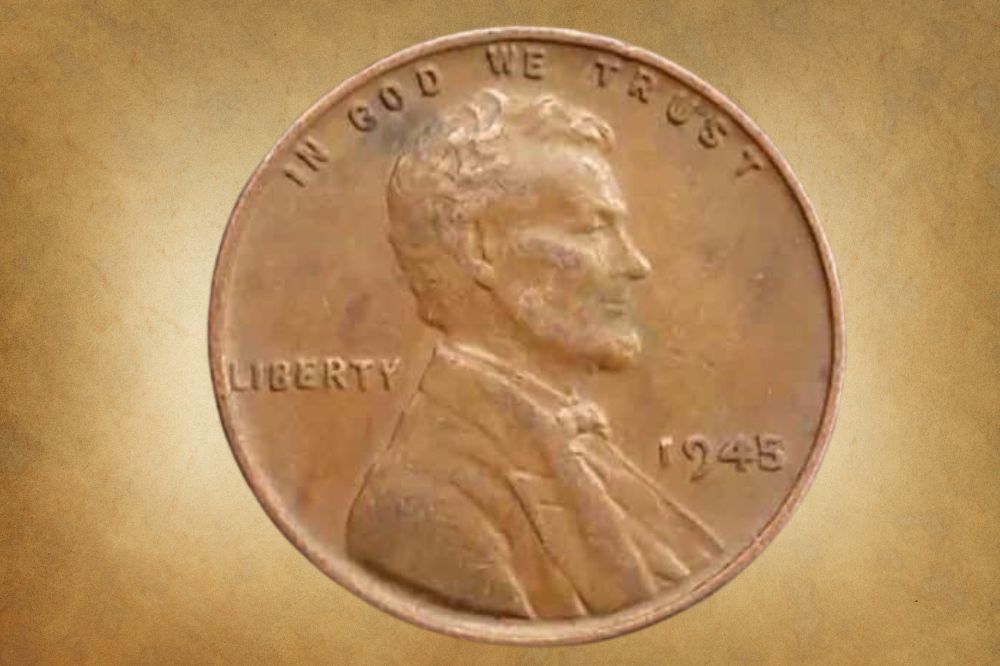
The Lincoln cent, also known as the Lincoln penny, has a long history. It was first produced back in 1909, and it’s still being minted today.
When it comes to an individual 1945 penny, value can vary hugely. So what determines how much a coin is worth?
That’s what we’re here to find out. And we’ll take a look at the history and key features of this interesting little coin along the way.
1945 Wheat Penny Value Chart |
||||
| Type | Circulated | MS62 | MS64/ MS65 | MS68 |
| 1945 Penny Value – Regular Strike, Brown | 1 to 15 cents | $7 | $10 to $20 | None |
| 1945 Penny Value – Regular Strike, Red-Brown | 15 to 40 cents | $8 | $10 to $45 | None |
| 1945 Penny Value – Regular Strike, Red | None | $3 | $20 | $3,700 to $4,300 |
1945 Penny Value Guides
1945 No Mint Mark Penny, Regular Strike, Circulated Value
By far the most ubiquitous of the Lincoln pennies is the 1945 Philadelphia struck penny. This one has no mint mark, and more than a billion of them were minted.
Numbers from the other mint facilities are much lower. Just over 266 million coins were struck in Denver, and just under 182 million in San Francisco.
So while a coin marked “S” is likely to turn up less often than one without a mint mark, they’re still available in large numbers. For that reason, prices are low. A standard circulated 1945 penny, wherever it was minted, will fetch only a few cents.
The key characteristic in adding a little extra to the value of circulated pennies is their color. Circulated coins will inevitably lose their original red color over time as they’re exposed to oxygen in the air.
But those that have more than 5% red remaining – termed red-brown – will command a small premium. An attractive example could fetch up to about 40 cents.
1945 Penny, Regular Strike, Uncirculated Value
1945 pennies that have never been circulated can command considerably higher values. But just how much higher depends on their quality.
As with circulated coins, color plays a part. A red coin will usually command a premium over a brown coin of the same grade. But a brown coin with attractive toning can also be very appealing to collectors.
And some coins graded red may have been “retouched” to enhance their color. That can be very difficult to spot. But if collectors suspect that a coin has been doctored, that will hit its sale price.
It is the grading, however that makes the biggest difference to a coin’s value. Unless it’s an error coin, a mint state 1945 penny graded MS62 can be picked up for under $10.
At MS64 and MS65, prices are higher, though still modest. Coins at this level can fetch between $20 and $45.
But move up a few points, and the value is completely different. Find a red 1945 penny graded MS68, and you’ll be bidding on a scarce commodity. And that’s reflected in auction prices, which range from $3,700 to $4,300.
Related Posts: 19 Most Valuable Lincoln Memorial Penny Worth Money
1945 Penny Errors
1945 Penny, Double Die Obverse
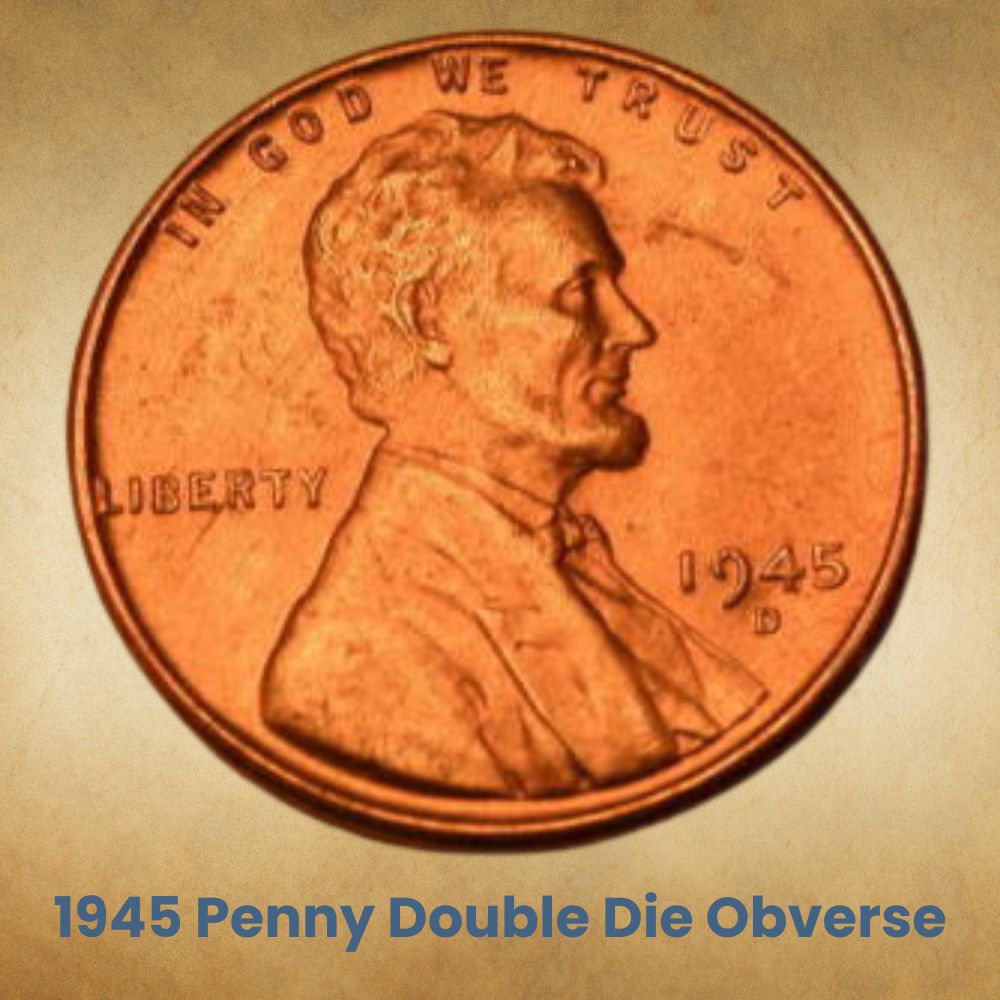
A double die error occurs when die is being crafted. It’s struck multiple times to create the design. And if one of those strikes is misaligned, the result is an image that has double lines.
Some doubling errors are so slight that it’s difficult to spot them at all. And they’ll only be apparent in coins in good, uncirculated condition.
There are a variety of different double die errors known to appear on the obverse of the 1945 penny.
One is apparent when you look at the word “Liberty”. You’ll have to look very closely to spot it, so get out your magnifying glass or jeweler’s loupe.
The doubling is most obvious at the top of the letter “i”. Look closely, and you’ll see a small notch on the top right-hand corner. That’s been formed when one strike of the die has hit slightly lower and to the right of another.
Find an example of this error coin in MS65 red, and it will be worth about $500. At MS63, the value reduces to about $100. Spotting the error at all in coins of lower quality will be almost impossible.
1945 Penny, Clipped Planchet
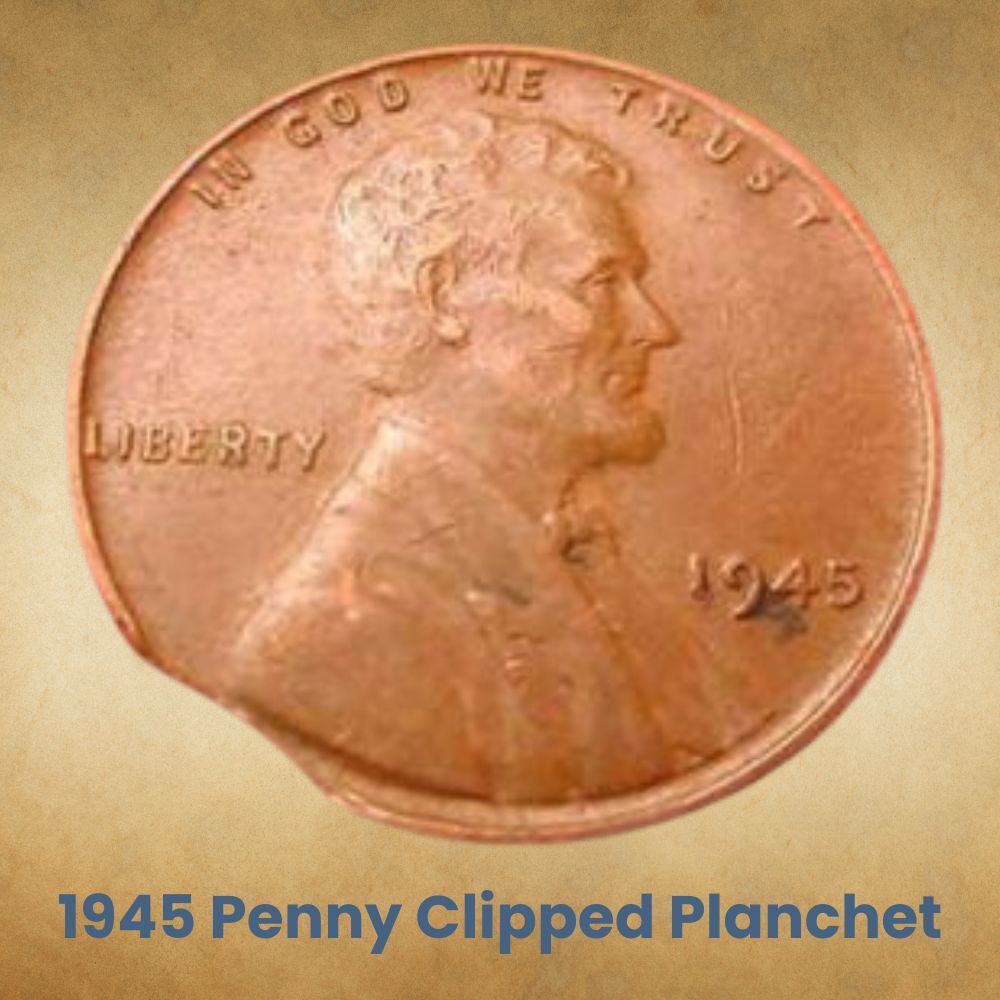
Planchets are the round discs on which coins are struck. At least, they’re usually round.
They’re formed from long strips of metal that are fed into what’s called a blanking press. But if the metal is mis-fed, it can result in a series of different types of clipped planchets.
A curved clip happens when the metal sheet doesn’t move far enough forward after the last blank is cut. As a result, the next planchet is pressed out partly over the hole left in the metal. The result is a planchet with a section missing. And that section will have a curved edge.
A straight clip occurs when the die overlaps the edge of the metal strip. If it overlaps a corner of the strip, there’ll be a right-angled section missing from the coin instead. Other types of errors are known as elliptical, ragged, and incomplete clips.
Compared to other types of errors, clipped planchets are fairly common. A 1945 penny with a curved clip to about 7% of the planchet and graded MS66 sold at auction for $92.
1945 Penny, Cud
Another relatively common error is known as a “cud”. This is when a die break touches the edge of a coin as it’s being struck. The break results in the loss of detail to part of the image.
An example of a cud error on a 1945 San Francisco minted penny graded MS65 red sold at auction for $126.
This excellent YouTube video from Mint Miser walks you through a whole range of different errors in 1945 pennies.
Related Posts: 16 Most Valuable Wheat Penny Errors
History of the 1945 Penny
The first Lincoln cent, also known as the Lincoln penny, was minted in 1909. The year marked the centenary of Lincoln’s birth. And the new coins were an instant hit with the public, with people queuing at every Treasury facility to get their hands on them.
Interest was such that allocation of the Lincoln cents was soon rationed. Prices rose to a quarter per coin on the secondary market, before settling at “just” five times their face value.
The coins weren’t welcomed by everyone, however. Vending machine companies complained that they were too thick to fit existing slots. The Mint’s chief engraver at the time, Charles E. Barber, resisted making any changes. In the end, it was the vending machines that had to be modified.
The coins continued to be produced for decades. In 1936, proof versions were struck for the first time, produced at the Philadelphia mint.
The arrival of the Second World War presented challenges. The war effort led to severe shortages of both copper and tin, both used in the coins’ production.
In 1942, new legislation was passed authorizing the coins to be made from steel with a zinc coating. The copper saved by the new construction was enough to create over a million shells.
In 1943, the steel cents were discontinued. The new cents were made from copper with a small amount of zinc. The following year, the zinc was replaced with tin, as had been the case before the war. So the 1945 pennies had the same composition as their pre-war counterparts.
The same design was used on every Lincoln penny until 1958. Then in 1959, the design on the reverse was replaced with a depiction of the Lincoln Memorial.
Related Posts: 19 Most Valuable Wheat Penny Worth Money
how to identify 1945 Penny
The Obverse of the 1945 Penny
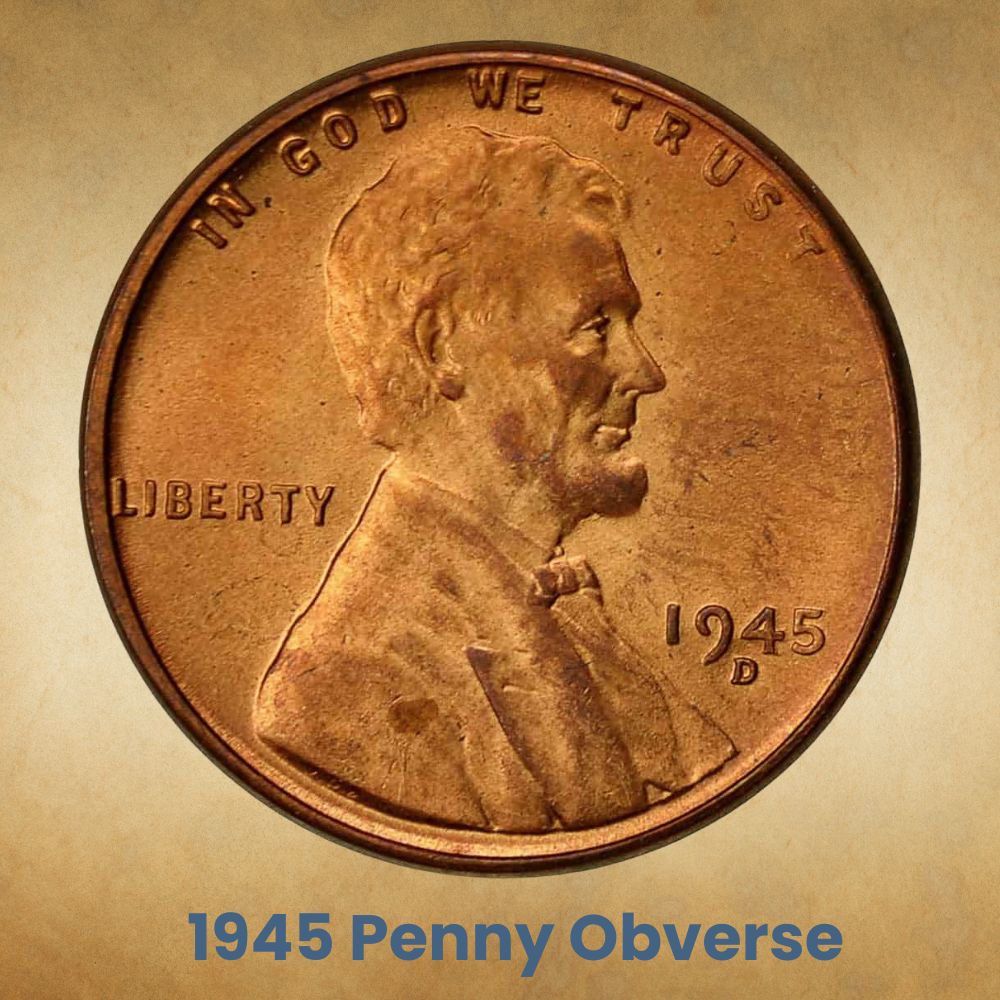
The obverse is also known as the “heads” side of a coin. The obverse of the 1945 penny, as all other mintages of the coin, bears the portrait of Abraham Lincoln. It was the work of sculptor Victor David Brennan, who had already produced several likenesses of Lincoln.
One of those, a plaque produced for a manufacturing company in 1907, appears to have been the basis for the portrait. Brenner said in a letter that he’d imagined Lincoln as he would have appeared reading to a child. This, he felt, showed the president at his most engaging.
In 1916, Charles Barber made some minor changes to the portrait to prolong the life of the dies. He removed wrinkles from Lincoln’s cheek and his coat.
Also on the obverse is the motto “In God we trust”, which curves around the upper edge of the design. The word “Liberty” appears on the left, level with the bottom of Lincoln’s neck. And the date appears on the right of Lincoln’s portrait, next to his chest.
The Reverse of the 1945 Penny
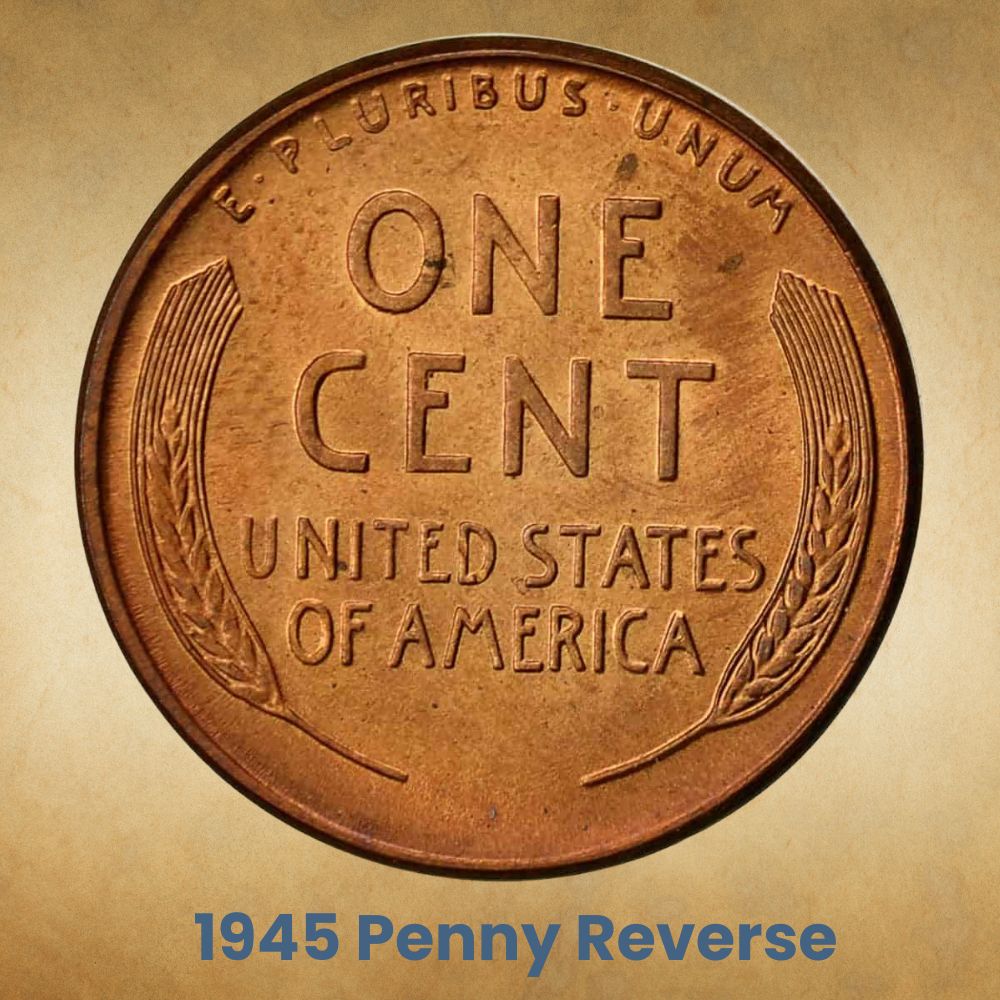
The design for the reverse of the 1945 penny was again by Brenner – but it wasn’t the first option the sculptor submitted. That had been an image of a tree branch, very similar to that used on coins being produced at the same time in France.
The director of the Mint, Frank Leach, discovered the source of the design. But rather than making an issue of the “artistic borrowing”, he simply said that it was unsuitable.
He asked Brenner to come up with a simple design that also incorporated the union’s motto “E pluribus unum”, as well as the United States of America and the coin’s denomination.
Just over a week later, Brenner submitted a new design featuring two ears of durum wheat. This was to be the image that would adorn the Lincoln penny for almost five decades.
But more disagreement was to follow. Brenner had signed the design with his full name. This had raised objections that it was “advertising”, and Brenner agreed that it should be replaced with his initials.
That, however, wasn’t the end of the story. The initials, placed on the bottom of the reverse design, were considered by some to be too large. Production of the coins was halted while the issue was dealt with.
The original plan was for the initials to be made smaller. However, that would have led to a longer delay than simply removing them altogether. And despite Brenner’s protests, his initials were deleted.
That decision was finally reversed in 1918. From then on, however, Brenner’s initials appeared on the obverse, inconspicuously tucked under the edge of the president’s bust.
Other Features of the 1945 Penny
The 1945 penny has a smooth edge. And being made of copper, its color varies with exposure to the air and handling.
When coins are graded, they are sorted into one of three different colors: brown, red-brown and red.
Red is the color of brand new copper. And for a coin to be assessed as “red” at least 95% of its surface must be that color. The shade is almost exclusively found in mint state or proof coins, and it often adds a significant premium to prices.
The very nature of circulation will change the color of the copper. And uncirculated coins will also change color over time. Brown coins are those where less than 5% of the surface color is red. And the red-brown designation is used for everything in between.
This YouTube video from BigDCoins looks at the 1945 penny, together with those made in 1946 and 1947.
FAQs
What makes a 1945 penny rare?
The vast majority of 1945 pennies aren’t rare at all. They were produced in large numbers at all three mint facilities.
1945 pennies struck in Denver are rarer than those struck in Philadelphia. And those struck in San Francisco are rarer than those struck in Denver. But being struck in Denver or San Francisco doesn’t make a penny rare.
What does make it rare is excellent condition. Uncirculated coins graded MS65 and above are much harder to find. And coins at the very highest levels – MS67 or above – are rarest of all.
Coins produced by mint errors are uncommon too. Some types of errors, though, are rarer than others. The rarest of all mint errors is a mule, where the images on both sides shouldn’t appear on the same coin. But there are no known mules for the 1945 penny.
How much is a 1945 penny worth?
Most 1945 pennies are worth only a few cents. The exception are pennies that are either in the best condition or are errors. And of course, a coin that’s both highly graded and displays an error can interest a wide range of collectors. It’s that type of competition that drives high prices.
The highest graded uncirculated red pennies can fetch around $4,000. And error coins can fetch anything from tens to hundreds of dollars.

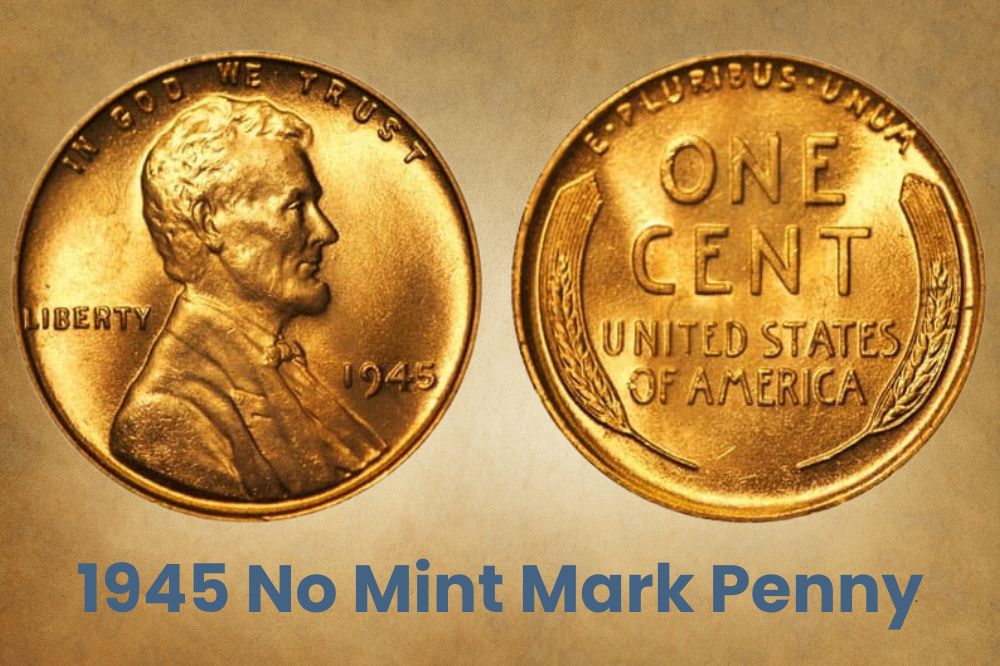
i have this penny 1945 with the error — and the one dollar peace 1926 with the (S) mark
I have a 1945 S penny, and it’s in pretty good condition, but it’s a “double dye”. Is it worth anything?